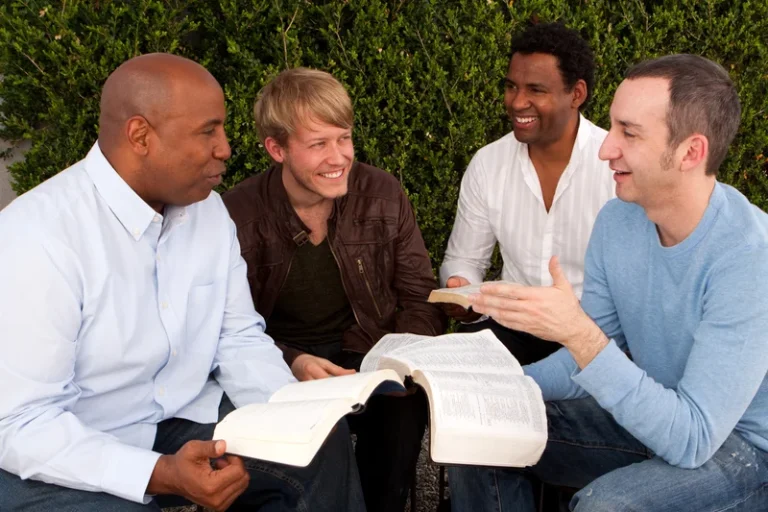
In the next section we provide a complete picture of these relapse risk factors by applying a dynamical systems model to the relapse process. First we present the conceptual model of the relapse process as a dynamic https://ecosoberhouse.com/ system, as described by Witkiewitz and Marlatt (2004) and Hufford and colleagues (2003). First, as we wanted to keep the generation of statements feasible and non-confusing for the participants, we formulated one focus statement in which the predictors of physical activity and dietary behavior were combined and no distinction between lapse and relapse was made.
- For instance, the return to substance use can have reciprocal effects on the same cognitive or affective factors (motivation, mood, self-efficacy) that contributed to the lapse.
- We summarize historical factors relevant to non-abstinence treatment development to illuminate reasons these approaches are understudied.
- Our brains tend to remember past experiences more positively than they actually were, often overlooking the negative aspects.
Related terms:
The sheer disaster of a relapse crisis after an individual has been maintaining abstinence has bewildered patients, researchers, and clinicians for years. The symbolism of “falling from the wagon,” provides an illustration of the sudden, devastating experience of the chronic return to previous levels of abuse. This experience is often followed by the harsh realization that getting back on the wagon will not be as effortless as the fall from it.
Theoretical and empirical rationale for nonabstinence treatment

The treatment is not lapse prevention; lapses are to be expected, planned for, and taken as opportunities for the client to demonstrate learning. Most often, relapse tends to be construed as a return to pretreatment levels of occurrence of the targeted behavior. Although there is some debate about the best definitions of lapse and relapse from theoretical and conceptual levels, these definitions should suffice.
1. Nonabstinence psychosocial treatment models

One of the unique features of Cuspfit is the ability to enter up to five independent variables as control parameters. For example if a cusp model was proposed in which two variables were theoretically consistent with the splitting parameter and one variable was theoretically consistent with the normal parameter, then the user could constrain these three variables to test this hypothesis. It is also possible to model the behavior with all independent variables constrained to zero, therefore testing the fit of a catastrophe model without control parameters influencing the shape or position of the cusp.
- Put simply, the AVE occurs when a client perceives no intermediary step between a lapse and a relapse.
- Preventing people from relapsing into unhealthy habits requires insight into predictors of relapse in weight loss maintenance behaviors.
- In psychotherapy, an abstinence violation effect refers to the negative cognitive and affective reactions one experiences after returning to substance use after a period of abstinence.
- Because relapse is the most common outcome of treatment for addictions, it must be addressed, anticipated, and prepared for during treatment.
- As a newer iteration of RP, Mindfulness-Based Relapse Prevention (MBRP) has a less extensive research base, though it has been tested in samples with a range of SUDs (e.g., Bowen et al., 2009; Bowen et al., 2014; Witkiewitz et al., 2014).
This reaction, termed the Abstinence Violation Effect (AVE; 16), is considered more likely when one holds a dichotomous view of relapse and/or neglects to consider situational explanations for lapsing. In sum, the RP framework emphasizes high-risk contexts, coping responses, self-efficacy, affect, expectancies and the AVE as primary relapse antecedents. The divergence of linear response and critical slowing down catastrophe flags require data that includes a perturbation of the system. Critical slowing down can be demonstrated by looking at the pattern of changes in drinking behavior following treatment. For example, Hawkins and Hawkins (1998) abstinence violation effect present a case study of an individual’s alcohol intake over a 6-year period.
- Notably, these individuals are also most likely to endorse nonabstinence goals (Berglund et al., 2019; Dunn & Strain, 2013; Lozano et al., 2006; Lozano et al., 2015; Mowbray et al., 2013).
- The AVE occurs when a client is in a high-risk situation and views the potential lapse as so severe, that he or she may as well relapse.
- The RP model also incorporates numerous specific and global intervention strategies that allow therapist and client to address each step of the relapse process.
- Detailed discussions of relapse in relation to NDST and catastrophe theory are available elsewhere 10,31,34.
- The client’s appraisal of lapses also serves as a pivotal intervention point in that these reactions can determine whether a lapse escalates or desists.
- Although withdrawal is usually viewed as a physiological process, recent theory emphasizes the importance of behavioral withdrawal processes 66.

This metaphor accurately portrays the observation of the sudden transition from abstinence to pre-treatment levels of alcohol consumption that has been demonstrated in empirical investigations (Hore, 1971; Sutton, 1979). Treatment outcomes are so marked by sudden jumps that the cliché “fall off the wagon” has been used to describe the abrupt changes in drinking behavior following treatment (Miller, 1996). Likewise, Miller and C’de Baca (2001) identified that sudden gains often occur in recovery from alcohol problems.
- A psycho-educational self-management approach is adopted in this program and the client is trained in a variety of coping skills and responses.
- This paper presents a narrative review of the literature and a call for increased research attention on the development of empirically supported nonabstinence treatments for SUD to engage and treat more people with SUD.
- Functional imaging is increasingly being incorporated in treatment outcome studies (e.g., 133) and there are increasing efforts to use imaging approaches to predict relapse 134.
- For instance, twelve-month relapse rates following alcohol or tobacco cessation attempts generally range from 80-95% 1,4 and evidence suggests comparable relapse trajectories across various classes of substance use 1,5,6.
- A “controlled drinking controversy” followed, in which the Sobells as well as those who supported them were publicly criticized due to their claims about controlled drinking, and the validity of their research called into question (Blume, 2012; Pendery, Maltzman, & West, 1982).

The evolution of cognitive-behavioral theories of substance use brought notable changes in the conceptualization of relapse, many of which departed from traditional (e.g., disease-based) models of addiction. For instance, whereas traditional models often attribute relapse to endogenous factors like cravings or withdrawal–construed as symptoms of an underlying disease state–cognitive-behavioral theories emphasize contextual factors (e.g., environmental stimuli and cognitive processes) as proximal relapse antecedents. Cognitive-behavioral theories also diverged from disease models in rejecting the notion of relapse as a dichotomous outcome.
